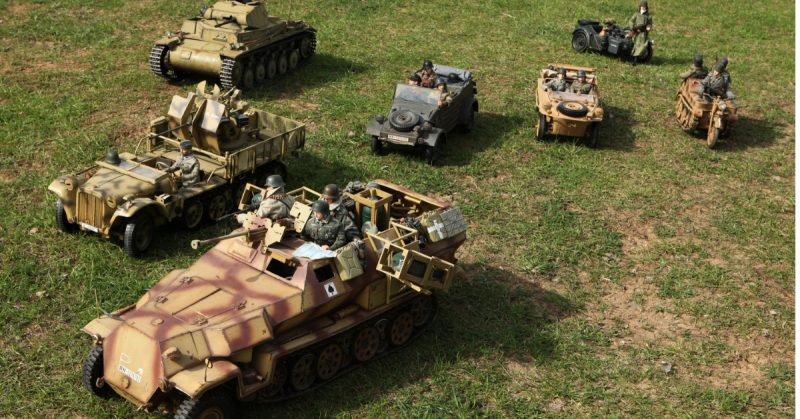Growling onto the battlefields in a blaze of shell-fire, the first motorized fighting vehicles made their appearance during the First World War. By the beginning of the Second World War, those crude machines had evolved into a variety of complex vehicles for different roles and conditions. As the war progressed, they continued to develop, as they were tested in a way they had never been before.
The Initial Imbalance
At the start of the war, the Axis nations were generally better equipped with combat vehicles. Dictatorial power and militaristic agendas had let them funnel resources into designing and producing vehicles, as well as the tactics to use them.
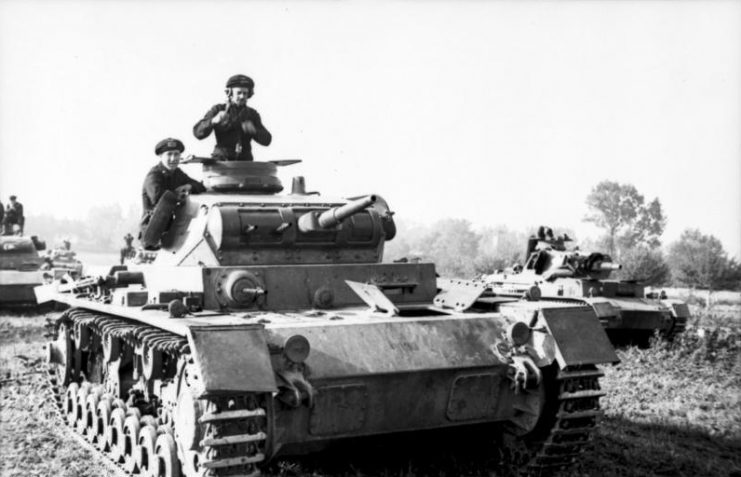
This was exemplified during Germany’s lightning invasion of Poland in 1939 and the swift fall of France the following year. Superior German tanks and armored tactics were crucial to these victories. The groundwork laid by theoreticians such as Heinz Guderian meant that the best available weapons were put to the best possible use.
A Pattern of Progress
Following this initial phase, the balance began to shift back and forth. The Allies, racing to build up their armed forces, were able to make use of the latest designs. They also had the experience of men who had fought in Poland and France, the first large-scale test of the existing vehicles and tactics. While the Axis nations sought to make use of established stockpiles, the Allies began fighting with new machines.
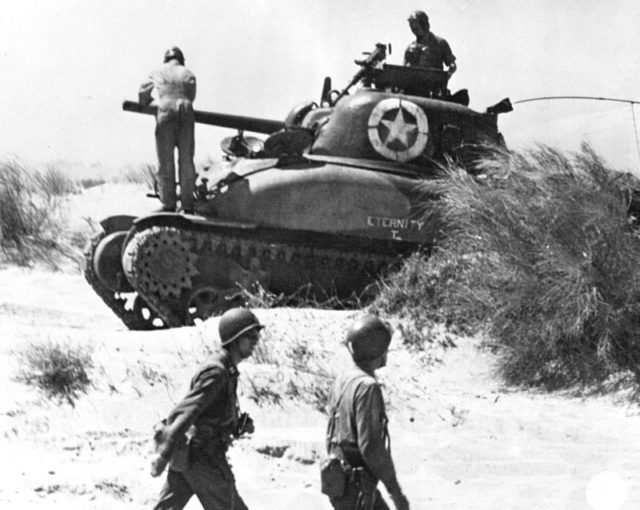
As the war progressed, the balance repeatedly shifted back and forth, as improvements by one side forced the other to respond.
Rethinking the Tank
The first big changes came in tank design.
Light tanks were immediately shown to be too vulnerable. The British abandoned them straight away. For logistical reasons, the Americans and Germans kept using them for longer. American light tanks were tough enough to continue in service until 1945.
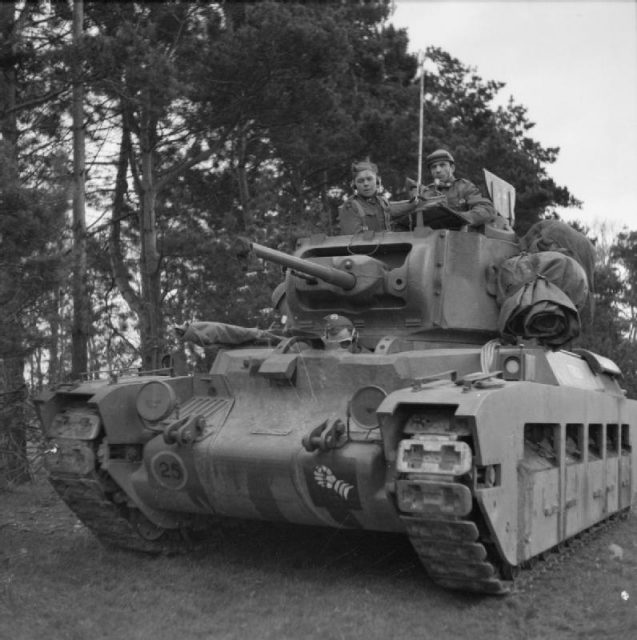
Heavy tanks also had to be redesigned. Inter-war designers had prioritized mobility over firepower and defense. The war’s early campaigns proved that this was the wrong approach, particularly through the success of British Matilda II tanks at Arras in 1940. The Germans were quick to learn this lesson, putting more emphasis on combat weapons and armor. The British were slower to adjust, and so were outgunned in North Africa in 1941-2.
Russia Rushes Forward
Russia’s massive industrial base allowed the nation to experiment widely with tank designs. Many of these experiments were quickly abandoned, but they taught valuable lessons. These went into producing the T-34 medium tank, one of the most successful fighting vehicles in history.
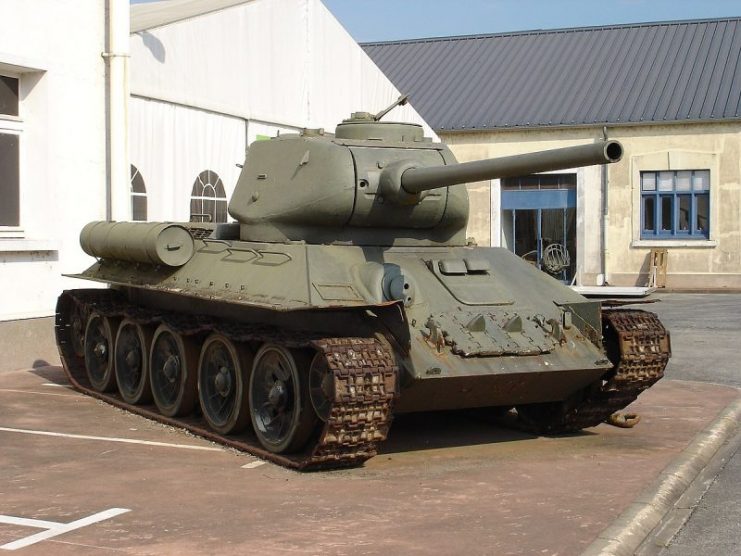
The T-34 entered production in May 1940. Nearly 40,000 of them were produced over the course of the war. Together with the heavier KV tank, they were crucial to halting the German invasion of the USSR.
The Arsenal of Democracy
America had a powerful automotive industry which was swiftly reoriented to support both the US and Allied armies. Hundreds of thousands of Jeeps and Jimmy trucks were churned out to meet transport and logistical needs.
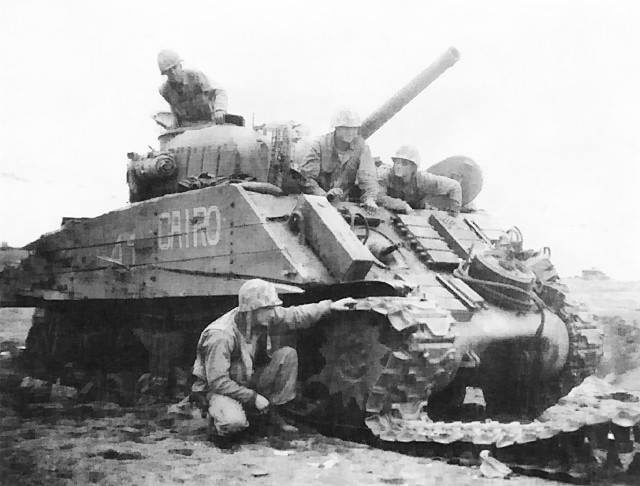
To provide tanks, the US Army teamed up with the Chrysler Corporation to create a new $21 million arsenal in Detroit. Even as the arsenal was being built, the design of the tank it would build was changing, as engineers realized that a heavier gun was needed to penetrate modern armor. The result was the M4 Sherman, the standard battle tank of the western Allies. As in Russia, standardization and mass production were prioritized to get the weapons out.
Going Heavy
The arrival of the T-34 led to another important change. To fight back against this vehicle, the Germans developed two new heavy tanks – the Tiger and the Panther.
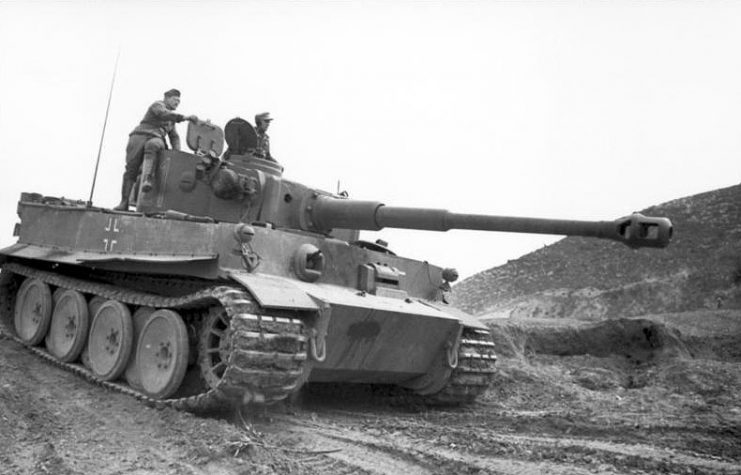
Though a strained military industry produced fewer than 7,000 of them by the end of the war, these vehicles had a huge impact. Their improved armor and armaments proved deadly for Allied tanks, whose designers were forced to up their game. 75mm guns were replaced by 76mm and even 90mm weapons as they sought a tank that could reliably take on the hard hitters.
Armored Cars
At the start of the war, armored cars were shown to have the same disadvantage as light tanks – they were too fragile in a fight against tanks or anti-tank guns. Unlike light tanks, however, they still had some value as their mobility made them useful for reconnaissance. In America, designers came up with a wide range of impractical designs, seeing armored cars as the easiest way to put a heavy gun on wheels.
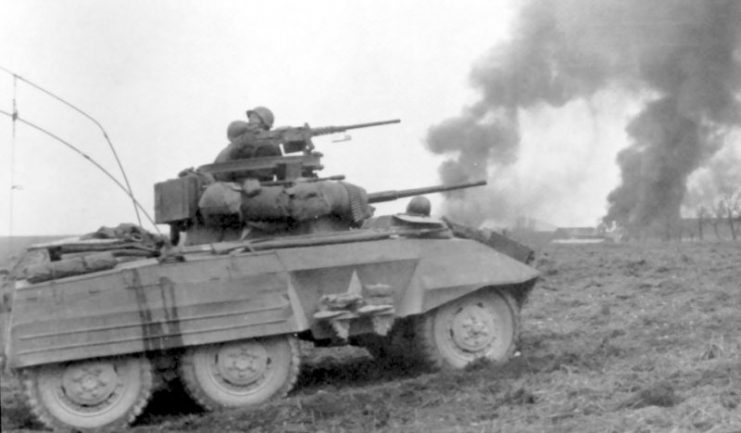
In North Africa, armored cars proved valuable in scouting expeditions across the wide open spaces. Once the war shifted to Europe, things changed. Denser terrain and more built-up areas meant that their mobility was reduced and they were more vulnerable to ambushes. Their use was heavily reduced, though they remained in action until the end of the war.
Self-Propelled Guns
The biggest change in fighting vehicles across the war was the appearance of the self-propelled gun. These vehicles were cheaper and easier to make than tanks because they didn’t have turrets, instead carrying weapons in relatively fixed positions on tracked chassis. This design let these vehicles carry heavier weapons.
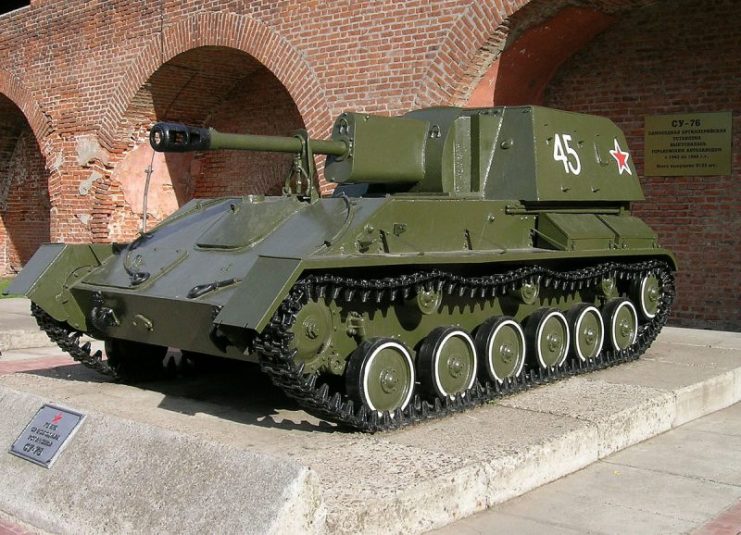
The downside of self-propelled artillery was that it was harder for the vehicle to defend itself. This made it vulnerable to infantry at close range using anti-tank weapons.
The first self-propelled gun was designed by the Germans just before the war, to provide supporting fire for infantry. It would advance with them, taking out obstacles and strongpoints that the infantry struggled with. This first weapon was followed by others, including tank-killing weapons.
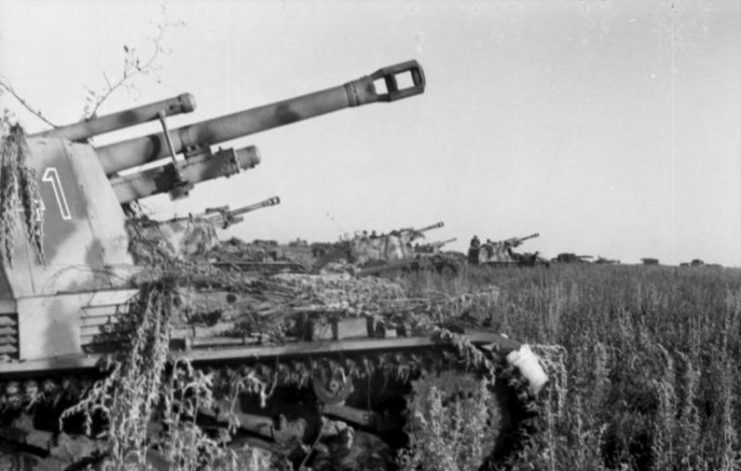
Other countries soon copied the idea. The Russians followed the German lead, using self-propelled guns to provide close support for infantry. The Americans and British did the same, as well as taking them down a different route, creating self-propelled artillery to keep up with advances.
A Changing Arsenal
By the end of the war, mechanized arsenals had been transformed. Light tanks and armored cars were almost abandoned. The new tanks were heavier than ever. Self-propelled guns let heavy firepower move up with the rest of the army.
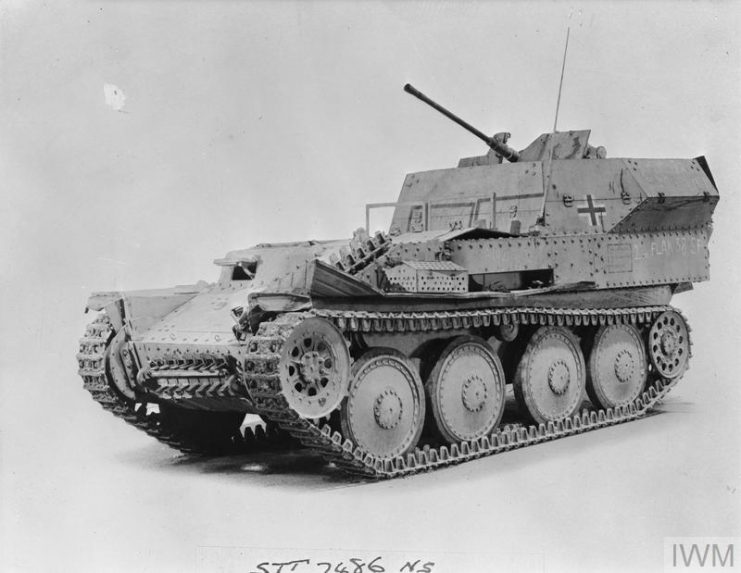
The reality of war had shown the weaknesses in what came before. In the urgent heat of war, fighting vehicles had to change.
